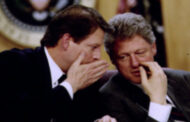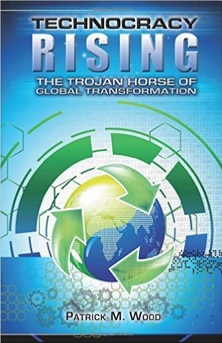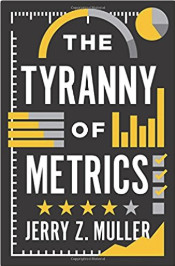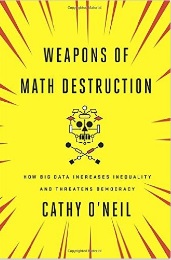In the testimony of Wayne N. Hage in a congressional hearing held on October 29, 2013 titled, Threats, Intimidation and Bullying by Federal Land Managing Agencies, he said the following:
However, there it is becoming very apparent that there is no rule of law with regard to the employs of the BLM, USFS and perhaps the DOJ, there we have the rule of man. I remind Congress that Aristotle explained that the difference between a correct form of government and perverse form of government is that the former is the Rule of Law and the latter is the rule of man.
When I fixed on a firm mission of identifying the corporatization of our government through the redesign of systems in the model of and integrated with corporate systems, I didn’t know about Aristotle’s warning but from having worked as an IT professional in the corporate world, I knew there would be the perversion of government because of the collectivization inherent in corporate systems designed to manage assets and processes.
What happened to the Bureau of Land Management (BLM) in the Reinvention of Government project – corporatization of government is a case study in the perversion of government. The perversion of the BLM includes the realignment of incentives to reward corruption – illegal, immoral and unethical behavior. From the outside, the BLM is the same BLM organization it was before the Reinvention. On the inside however, the mission and organizational management changed – meaning that they became a different agency with a different purpose while maintaining the façade of the old organization.
1998 BLM Home Page from the Internet Archive
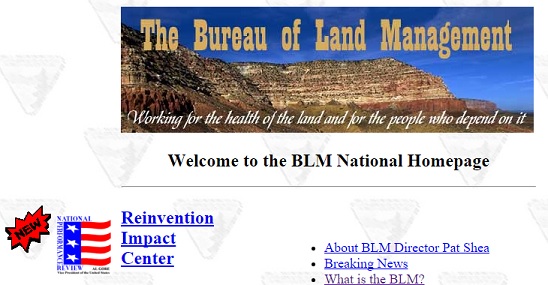
The objectives of the new agency are at odds with the old agency. Over time the new agency began imposing their new objectives on the Ranchers. The problem came to a head BLM contractors came to round up and sell Cliven Bundy’s cattle at the Bundy Ranch standoff. Cliven, his family and supporters were demonized for it because the assumption was made that Bundy became anti-government rather than what really happened which was that the BLM became anti-rancher and they were using the regulatory and confiscatory power of government to try to put him out of business.
It was the unrecognized and unacknowledged redefinition of the purpose of the BLM that has led us to where we are today with the occupation of the Malheur National Wildlife Headquarters. People are no different today than they were in 1776…((( When in the course of human events ))).
When the government is trying to destroy you – when the abuses are to such a degree that it becomes obvious the government has declared war on you, at some point people will begin to fight back. It’s a matter of survival.
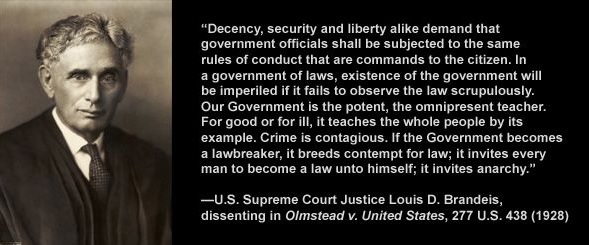
Reinvention of Government
Bill Clinton and Al Gore were sworn into office in January 20, 1993. On March 3, 1993 Clinton announced the initiative to “reinvent government” and he named Al Gore to head up the project that began as the National Performance Review (NPR).

Bruce Babbit was appointed to be the Secretary of the Interior and took office on January 22, 1993. Bruce Babbit’s entire bio is noteworthy but for the moment, pay particular attention to the following:
- He was a founding member of the Democratic Leadership Council (DLC)
- He was a member of the Council on Foreign Relations and the Grand Canyon Trust
- His wife Harriet was appointed to be Ambassador to the Organization of American States (OAS).
Prior to Bruce Babbit coming into office, the BLM was the caretaker agency primarily for western lands designated for multiple use. They manage what could be viewed as the Fort Knox of natural resource wealth held in trust for the benefit of the American people. They were responsible managing leases for commercial purpose – including oil, gas, mining and minerals. They held the nation’s historical land records. They have the authority to buy, sell, lease and trade property and to permit use. They have the land title information, the Cadastral survey / Geographic Coordinates Data Base, Land Patents and Title Information. The BLM is also responsible for the issuance of permits for mining, energy, forest harvesting, grazing and forage and special uses such as rights-of-way for pipelines and transmission lines.
In a Case Study titled, Use of Strategic Planning at the Bureau of Land Management produced by The American Society for Public Administration: Government Accomplishment and Accountability Task Force, the author wrote the following:
Much of the institutional energy and unique culture of BLM is driven by its diverse field level activities and wide geographic dispersion. It is at the field level in which collaborative efforts with other agencies, adjacent landowners, and local publics have traditionally occurred…
…
In the summer of 1993, which marks the beginning of the current strategic planning effort, a general consensus developed at the bureau level that a better integration of program areas was in order. The director of BLM assigned a team of 8-10 people to arrive at brief strategic documents in key areas. A survey of related federal agency experience with strategic planning was also completed.
The BLM Agency personnel were Delphi’d into consensus. The author of the study continues:
Several factors, both internal and external to BLM, shaped the view that more salient strategic planning was in order for the agency. Key drivers included:
- Changing demand patterns in the West. The U.S. West had undergone tremendous population and economic growth. This resulted in changes in land use demands. These changes in demand (taken together with growing public concern over the health of waterways, grasslands, and forests) created significant challenges and opportunities for BLM.
- Changes in the way resource professionals thought about the most effective way to manage resources. Best captured under the term Ecosystem Management, these changes involved modifications in the scale, focus, and goal integration of all the BLM program activities along with other federal resource management programs. BLM realized the need to move from a project-oriented approach to a more comprehensive (watershed or landscape) view in its land use decisions. This shift in orientation also suggested a change in focus from program or commodity specific goals to more resource or landscape based objectives. This approach suggested the need for a more thorough integration of economic, social, and environmental considerations in land use decision-making.
- A general sense that many traditional procedures were no longer meeting public needs. Over time, many BLM programmatic procedures had become increasingly cumbersome and were no longer operating at optimum levels of efficiency or effectiveness
After more “consensus” development, in 1994, the reinvention project team produced a report titled, The Blueprint for the Future. “It was the BLM’s first ever formal, bureau-wide strategic planning document. The goals listed in the report were:
- To maintain healthy ecosystems;
- To serve current and future publics;
- To promote collaborative leadership;
- To improve business practices, and
- To improve human resource management practices.
Those are corporate goals that would be meaningless to an on-the-ground old time BLM Field Agent working with Ranchers and managing grazing and water rights on BLM property. The traditional BLM Field Agent was more like the Ranchers than they were like the eco-fascist corporatizers who took over the BLM during the Clinton-Gore “Reinvention of Government”.
REINVENTION
OF
GOVERNMENT
What is it about those words that people don’t understand?





